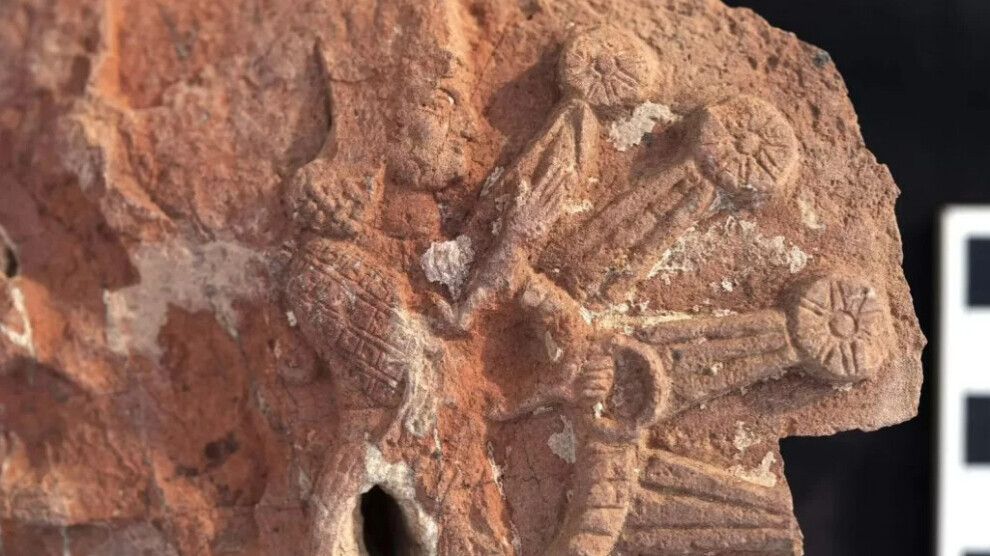Goddess Ishtar unearthed in the ancient Assyrian city of Nimrud
A large stone monument depicting the goddess Ishtar was unearthed in the ancient Assyrian city of Nimrud.
A large stone monument depicting the goddess Ishtar was unearthed in the ancient Assyrian city of Nimrud.

Archaeologists from the University of Pennsylvania Museum of Archaeology and Anthropology, working with an Iraqi excavation team, unearthed a large stone monument depicting the goddess Ishtar in the ancient Assyrian city of Nimrud.
Archaeologists have unearthed more monumental finds at Nimrud, one of the heritage sites in northern Iraq that has been severely destroyed by the Islamic State (ISIS).
Among the new remains discovered at the site are those belonging to a 3,000-year-old temple dedicated to Ishtar, the Mesopotamian goddess of love and war and the goddess with the oldest written evidence.
In previous excavations in Nimrud, the same team found a 2,800-year-old palace belonging to the Assyrian king Adad-Nirari III, who reigned between 810-783 BC.
Among the finds were fragments of a large stone monument depicting the goddess Ishtar in a star symbol.
Iraqi Heritage Stabilization Program Program Director and University of Pennsylvania archaeologist Dr. Michael Danti said in a statement: "Our biggest find this season was a magnificent fragment of a stone stele showing the goddess Ishtar in a star symbol. It is a divine aspect associated with the birth of the goddess's 'morning star' planet Venus, found in this temple, dedicated to the goddess herself. Ishtar is the first definitive description as Sharrat-niphi."
This season's new discoveries focus heavily on the magnificence of Adad-Nirari III's rule and the wealth of ancient Nimrud. The two massive stone column bases that archaeologists have discovered indicate that the palace was splendidly decorated with exquisitely carved pillars.
Inside the throne room, researchers found evidence of a large stone basin that they think may have been used as a central heating system.
They also discovered fragments of ostrich egg shells and ivory, both of which were rare and could have been extremely valuable in the early Bronze Age.